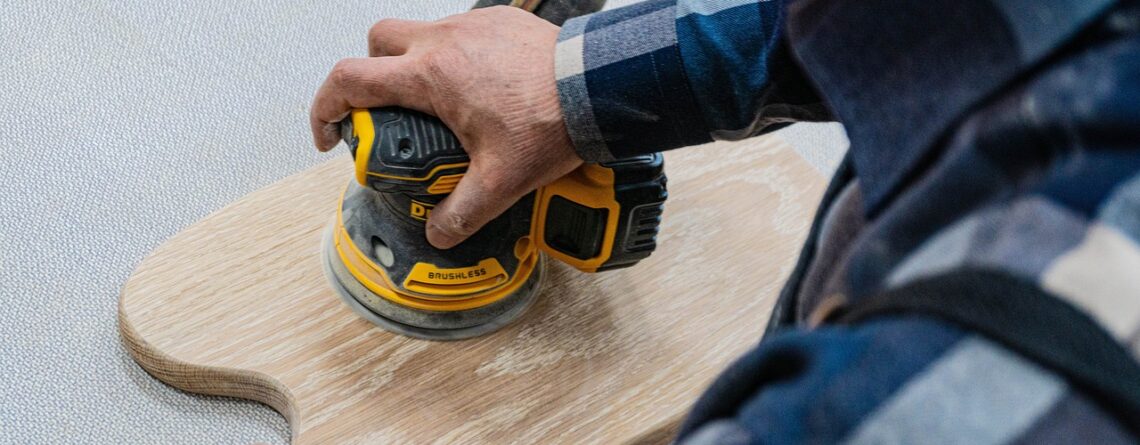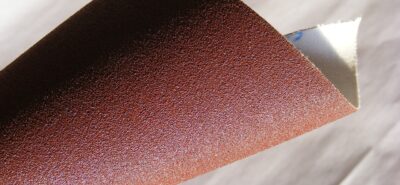The Ultimate Guide to Choosing the Right Sanding Disc for Wood, Metal, and More
Choosing the Right Sanding Disc for Your Project
When it comes to sanding, using the right sanding disc is crucial for achieving the best results. Whether you’re refinishing furniture, preparing metal for painting, or polishing a surface to perfection, the type of sanding disc you choose can make all the difference. In this guide, we’ll cover everything you need to know about selecting the right sanding disc, focusing on grit types, sizes (in both inches and millimeters), and whether to choose hole or no-hole designs.
By understanding these key factors, you’ll be able to complete your DIY or professional projects with efficiency and precision.
1. Sanding Disc Grits Explained
The grit of a sanding disc refers to the size of the abrasive particles on its surface. Choosing the right grit level is essential for achieving the desired finish. Sanding disc grits are classified into four main categories, depending on their level of coarseness:
Common Grit Levels for Sanding Discs:
- Coarse Grit (40–60): Ideal for heavy-duty tasks like removing old paint, varnish, or rust, as well as shaping rough wood. Coarse grits are excellent for aggressive material removal on hardwood, softwood, and metals.
- Medium Grit (80–120): Designed for surface smoothing and preparing materials for finishing. Medium grits are commonly used to sand wood before staining or applying primer.
- Fine Grit (150–220): Great for final sanding before applying paint, stain, or sealant. Fine grit ensures a smooth, polished surface.
- Extra Fine Grit (240 and above): Perfect for ultra-smooth finishes on wood, metal, or plastic, and for achieving a polished surface before final coating.
Pro Tip: Always start with a coarser grit and gradually work your way to finer grits for the best results.
2. Sanding Disc Sizes: Inches and Millimeters
Sanding discs are available in a range of sizes to fit different tools and accommodate various project needs. The size of the disc determines the area it can sand efficiently.
Common Sanding Disc Sizes:
- Small Sanding Discs (3–5 inches / 76–125 mm): These are ideal for detail work, intricate woodworking, and tight corners. They are typically used with small orbital sanders or detail sanders.
- Medium Sanding Discs (6–8 inches / 150–203 mm): Medium-sized discs are versatile and suitable for general-purpose sanding on wood, metal, and plastic. They work well with orbital sanders and random orbital sanders.
- Large Sanding Discs (9–12 inches / 230–305 mm): Perfect for large-scale or heavy-duty projects, such as sanding floors, decking, or industrial applications. These are typically used with belt sanders or industrial floor sanders.
Tip for Success: Always ensure your sanding disc size matches your tool’s specifications for optimal performance and safety.
3. Hole vs. No-Hole Sanding Discs
Choosing between hole and no-hole sanding discs depends on your tool and the level of dust control you need.
- Hole Sanding Discs: These discs feature pre-cut holes designed to align with the vacuum ports of your sander. This setup ensures efficient dust extraction, keeping your workspace cleaner and reducing airborne particles. Hole discs are ideal for woodworking, drywall sanding, and any indoor projects where dust control is important.
- Applications: Wood sanding, drywall smoothing, and fine surface preparation.
- No-Hole Sanding Discs: These solid sanding discs don’t have perforations, making them more versatile for use with sanders that lack a dust collection system. However, they may require frequent cleaning and produce more dust during use.
- Applications: Quick material removal, outdoor projects, and situations where dust collection isn’t a priority.
Best tip: For woodworking and drywall projects, using hole sanding discs with a dust collection system can improve air quality and reduce cleanup time.
4. Selecting the Right Sanding Disc Material
The material used in the abrasive layer of a sanding disc is designed to handle specific surfaces and tasks. Matching the material to your project is key to achieving professional results.
Common Sanding Disc Materials:
- Aluminum Oxide: A durable and versatile abrasive, suitable for wood, metal, and plastic. It’s widely used for general-purpose sanding tasks and offers excellent longevity.
- Silicon Carbide: Known for its sharp cutting action, this material is ideal for harder surfaces like metal, stone, glass, and ceramics.
- Ceramic: Ceramic sanding discs are highly durable and designed for aggressive sanding and heavy-duty applications. They are often used for industrial tasks and extended sanding sessions.
- Zirconia Alumina: This abrasive material excels at grinding metals and other tough materials. Its heat-resistant properties make it perfect for prolonged use on hard surfaces.
Best tip: Use ceramic sanding discs for long-lasting performance in heavy-duty tasks, and choose silicon carbide discs for polishing hard surfaces like glass and stone.
5. Applications of Sanding Discs
The type of sanding disc you choose will depend on your project’s material and the finish you need. Below are the best sanding disc options for common applications:
- Wood Sanding: Start with coarse grits (40–60) to shape or remove rough material, then switch to medium grits (80–120) for smoothing, and finish with fine grits (150–220) for a polished surface. Aluminum oxide discs are a great all-around choice for woodworking.
- Metalworking: Use silicon carbide or zirconia alumina discs in coarse grits for grinding and shaping metal. Finish with fine or extra-fine grits for polishing or preparing metal surfaces for painting.
- Drywall: Medium to fine grits (80–220) with hole discs work best for achieving a smooth finish and reducing dust buildup.
- Paint or Rust Removal: Coarse grit ceramic or aluminum oxide sanding discs can quickly strip paint, rust, or varnish, saving time on prep work.
Tips for Choosing the Perfect Sanding Disc
- Match the Size to Your Tool: Always check that the diameter (in inches or millimeters) matches your sander for a secure fit.
- Start with Coarser Grits: For rough surfaces or material removal, begin with a low grit and progress to higher grits for a smooth finish.
- Consider Dust Management: Opt for hole sanding discs if you’re working indoors or need to minimize dust.
- Choose the Right Material: Match the abrasive material to your project surface for maximum efficiency.
Choosing the right sanding disc is essential for achieving a professional finish on any project. By understanding grit sizes, sanding disc dimensions (in both inches and millimeters), and material types, you can confidently select the best disc for your needs. Whether you’re sanding wood, polishing metal, or preparing drywall, the right sanding disc can save you time and deliver stunning results.
Optimize your workspace with hole sanding discs for dust management, and always ensure you’re using a disc compatible with your sander. With these tips, you’ll tackle your next project with precision and ease!






LEAVE A COMMENT